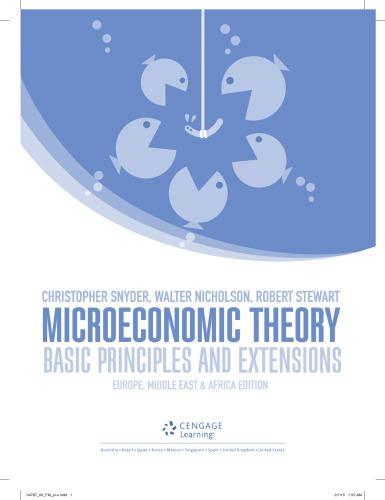17.11 Probabilistic voting Probabilistic voting is a way of modelling the voting process that introduces continuity into
Question:
17.11 Probabilistic voting Probabilistic voting is a way of modelling the voting process that introduces continuity into individuals’ voting decisions. In this way, calculus-type derivations become possible. To take an especially simple form of this approach, suppose there are n voters and two candidates
(labelled A and B) for elective office. Each candidate proposes a platform that promises a net gain or loss to each voter. These platforms are denoted by θ A i and θ B i , where i = 1, … , n. The probability that a given voter will vote for candidate A is given by π A i = f [Ui(θ A i ) − Ui(θ B i )], where f ʹ > 0 > f ʹʹ. The probability that the voter will vote for candidate B is π B i = 1 − π A i .
a. How should each candidate choose his or her platform so as to maximise the probability of winning the election subject to the constraint ai
θi A = ai
θi B = 0? (Do these constraints seem to apply to actual political candidates?)
b. Will there exist a Nash equilibrium in platform strategies for the two candidates?
c. Will the platform adopted by the candidates be socially optimal in the sense of maximising a utilitarian social welfare? [Social welfare is given by SW = ai Ui(θi).]
Step by Step Answer:

Microeconomic Theory Basic Principles And Extensions
ISBN: 9781473729483
1st Edition
Authors: Christopher M Snyder, Walter Nicholson, Robert B Stewart






